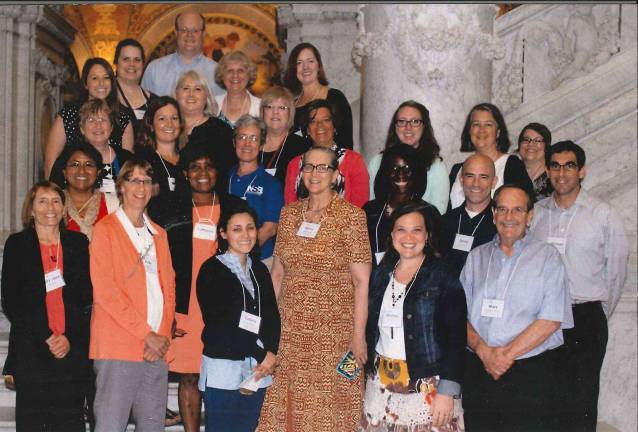Vernon native awarded grant

WASHINGTON, D.C. — Vernon Township High School alumna Brianna Reilly, 2008, was one of 25 teachers in the nation awarded the “Library of Congress Teaching with Primary Sources Seminar, Summer Teacher Institute” grant, in the Library of Congress, Washington, D.C..
At the library, she learned how to incorporate primary historical documents in her classroom.
Reilly currently teaches eighth-grade science in East Windsor Regional School District.
Reilly said she was amazed at how primary sources connect with students. She said the students gain a better understanding of the curriculum through thinking differently instead of just copying from the board and using a textbook. Now, they use primary sources, such as scientific journals, and thus, piggy-back on some of the great scientific thinkers' discoveries. On top of that, she said language arts-minded students especially benefit because they read the historic journals and analyze how scientists came to their conclusions through observation.
During her week at the Library of Congress, Reilly had the honor of learning about first edition copies of “Starry Messenger” by Galileo, currently in the rare book collection of the Library of Congress.
“Starry Messenger” shows some of the first detailed drawings of the moon through a telescope. Due to Galileo's published work, his observations challenged the then prevalent theory the moon was a perfect, celestial sphere. Instead, Galileo's observations showed the moon was actually cratered, marked, and imperfect.
Reilly said another theory put into question after Galileo's observations were published was the geocentric solar system-all planets revolve around the earth-versus a heliocentric solar system-all planets revolve around the sun. Galileo's observations showed Jupiter's moons orbiting Jupiter, hence the solar system is not geocentric.
In addition, Reilly had the opportunity to observe a draft copy of the U.S. Declaration of Independence in the Library of Congress' Preservation Lab. There, she learned how the lab preserves documents to last hundreds of years.
She also learned scientists recently unraveled the mystery of a scribbled out word found on the draft copy. Typically, Reilly said, the founding fathers had edited the declaration by drawing a single line through errors; and the editor noted his initials next to the change. About 250 years after the fact, through lights, techniques, and imaging with different cameras, Reilly explained scientists discovered the illegible word was “subjects” of the United States, which was changed to “citizens” of the United States.
Reilly added the Library of Congress receives a copy of every copyrighted material and determines to keep: one, two copies, or not at all. She said the goal of the library is to contain all relevant materials important to the people of the U.S., including: science, history, art, and philosophy.
Reilly explained the Library of Congress started when the Founding Fathers housed congressional and law texts passed by Congress. However, during the War of 1812, all of the books in the Library of Congress were burned. Reilly added Thomas Jefferson then donated his personal library to replace what was lost.
Finally, Reilly's work at the Library of Congress was so exceptional, she was then invited to present at the Houston Texas Library Association Annual Conference, along with two other people, about what she learned at the Library of Congress.